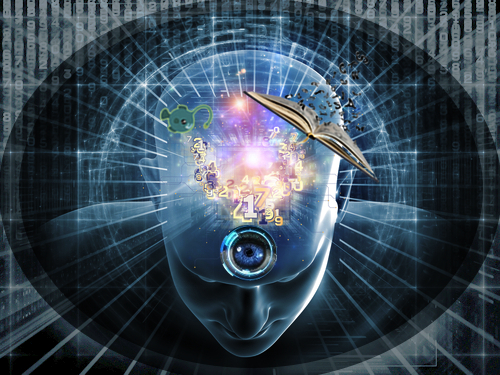If you can imagine it, you can create it! – A famous dreamer.
Since I was a child, my mother motivated me to capture moments I like or enjoy in a piece of paper, either by drawing or writing. Today, I continue doing it.
It is amazing the incredible amount of information that surrounds us, either natural or artificially originated. Our decisions are based on how we interpret that information, which in turn depends on how we perceive it. As current technology hit us every day with huge amounts of data, our brains work –very hard and constantly, to rapidly filter only what is relevant to us although during this process, we also miss important pieces of the puzzle… or at least that’s what it seems.
The question I have made to myself for some years is: What set of valid characteristics does our system extract in order to create an idea, define a concept or store an emotion?
As a computer vision scientist, I cannot stop myself from reformulating this question as follows: what type of feature extraction process does our brain apply to the thousands images we see each day? And, what would it be the minimum number of features I should use to represent it?
Well, the quick answer to that question could be: it depends on how you understand the idea, concept or emotion! Let’s suppose we, for some reason, just want to represent a dot, we can easily use the same dot as feature, right? But again, what are the components of an idea, concept or emotion that make it understandable and meaningful? This seems to be like the egg and chicken problem. It involves studies on cognitive and psychology sciences, and yet the question remains open. However, we all know that the main key components to build an approximation of an understanding are: imagination, creativity and a touch of motivation in the first place. What an easy recipe, right?
According to Manu [1], imagination is the ability to form mental images and ideas about things never seen or experienced before. Therefore, this implies the creation of new knowledge.
As humans, it is difficult to imagine our life without having the capability of storing events (i.e., images, thoughts, and sensations.) We commonly name memory to that place in our brain where all of our relevant feature images are being stored. Our memory can retain hundreds of thousands or even more of those perceptions we associate to events. However, can we truly affirm that only relevant perceptions of our world are stored? It is clear that we apply filters and classifiers to the abstract representation of perceptions. However, I think that once an insight about how to assimilate those events is born, it transforms naturally to a seed capable of filtering and classifying good features that help us to interpret what we perceive in our world. That is, the learning is generated from a critical thinking, which builds in turn, the theory needed to generate that learning [2]. So, memories and insights might have a tight bound. By recalling special features that were fired up by an interpretation that built an insight, we are able to recall. This process involves an optimal search of memories in our brain and goes far from just using our amazing eyes. It is actually a combination of what was captured at that moment by our senses (even a moment which was not necessarily experienced directly by us). For example, the smell of a rose, maybe make us create in our mind a vivid sensation of the softness and redness of its petals. The hearing of a child’s laughing makes us immediately create a happy scenario of a kid we have seen before. Furthermore, the thoughts, the physical intentions or the generated emotions associated to those moments also remain. It is in this way that becomes easy to imagine the sensation of passing our fingers on the petals, the internal emotions felt by a laugh, etc.
Interestingly, we are able to retrieve feelings and/or sensations from our memories. We are used to recreate those moments but also to create new ones. The mind loves to do this. We all have experienced happiness, sadness, anger, etc. and can recreate those feelings. Furthermore, we can increase the sensations of past events by adding new features to the associated memories… and it is when new insights start to build in order to store future events in the best way. To finish, here are my two cents: I do believe the insights generated by past experiences linked to our memories allow us to extract features of new events as meaningful or not. Therefore, to sketch an idea, concept or emotion into an image, we need only to consider those features that fire up when those events became clear. Then, naturally those features may become the theory needed for achieving learning.
[1] Manu, Alexander. “The imagination challenge.” Berkeley, CA: New Riders(2007).

Recent Comments